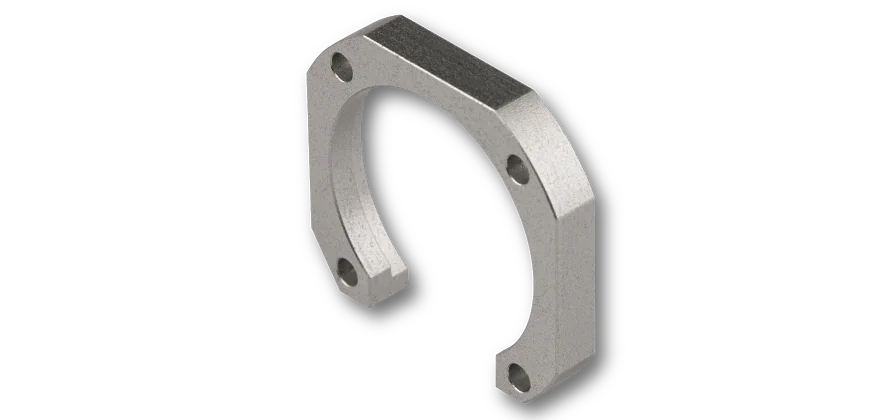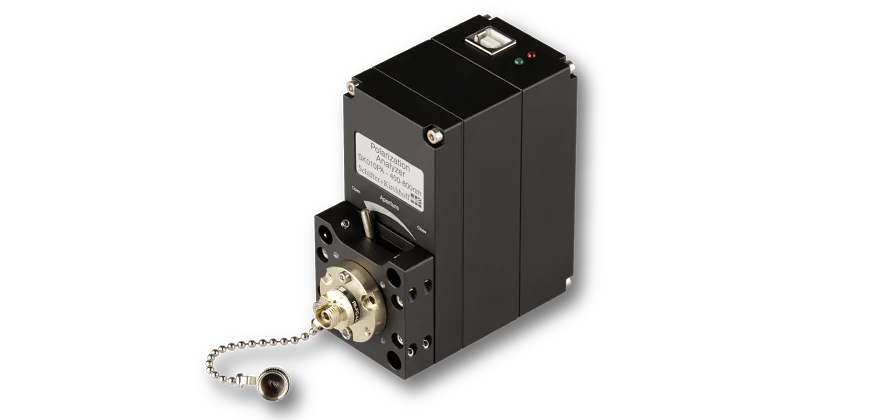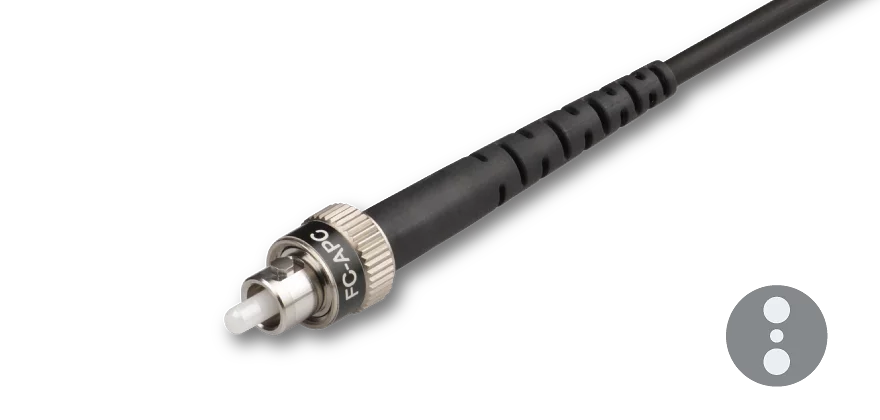The fiber collimators series 60FC-Q have an integrated quarter-wave plate and is designed for collimating radiation exiting optical fiber cables with high pointing stability and adjustable right-handed or left-handed circular polarization. They are suitable for single-mode and polarization-maintaining fiber cables leading to collimated beams with a Gaussian intensity profile.
An optics for each application
A large variety of collimating optics allows that the optimum focal length and the best lens type for a single wavelength (monochromat) or a wavelength range (achromat) can be selected for each application. All lenses are AR-coated.
Adjustment of focus and TILT, and state of polarization
The distance between fiber end-face and collimating optics is adjusted by means of an eccentric key. The lens does not rotate when adjusting the focus. The final focus setting is locked by means of two radially arranged clamping screws. Additionally attachment optics can be mounted to the front of the collimator.
Additionally, the collimator has an integrated TILT adjustment for aligning the beam axis to the mechanical axis. This prevents vignetting of the collimated beam as well as diffraction arising from the clipped beam.
The integrated low-order retardation optics with minimal angular dependency allows the adjustment of the state of polarization in the assembled state between right-handed and left-handed circular polarization. This is done using a cogged tool 60Z-2803 and can be monitored using the polarization analyzers series SK010PA. Retardation optics are available for typical wavelengths between 389 nm and 1084 nm.
Optimum lens performance
The angled polish of connectors of type APC is considered by a pre-angled mechanical coupling axis that compensates the beam deflection and you can use the lens centrically. This minimizes aberrations simply resulting from a non-ideal beam path through the lens.
Connector Type
The fiber collimator can be equipped with FC PC (wide key*), FC APC (wide key*), ST or LSA (compatible with fiber connectors type DIN, AVIO and AVIM) receptacles. In case of FC or LSA with a spring loaded ferrule the fiber coupler has an additional grub screw to increase pointing stability. *Even though the fiber coupler has a wide key receptacle it still can be used with both narrow key and wide key fibers. More information can be found here.
Material
The fiber collimators are made of nickel silver and black anodized aluminum.
Mounting
All Fiber Collimators 60FC-Q with diameter Ø 25 mm can be placed in a standard mirror mount. 60FC-Q with a larger diameter posses a flange for low-strain mounting e.g. using the clamp collars series CC.









